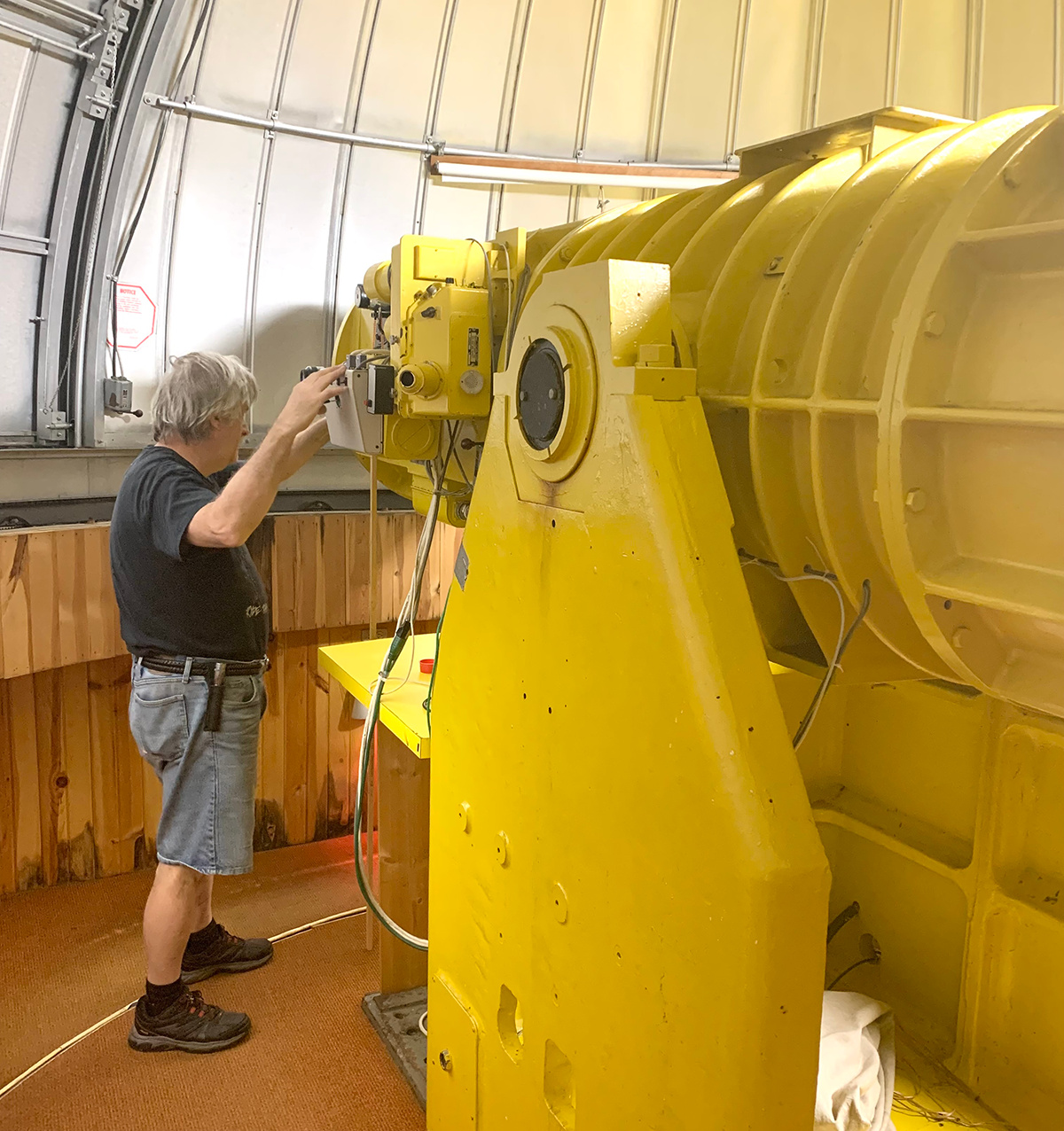The Chippewa Valley Astronomical Society (CVAS) held a telescope viewing and stargazing event from 7:30-9:30 p.m. on Saturday, Sept. 30 at the Hobbs Observatory, located in the Beaver Creek Reserve (BCR) near Fall Creek, Wisconsin.
These public observing sessions occur every Saturday, weather permitting, from May through October. They are completely free with no registration required. Donations, however, are appreciated. Ages six and up are welcome to come and enjoy the wonders of the night sky.
The CVAS is an astronomy organization that was first established in 1980 and currently has over 50 members. Its interest levels range from casual to committed, including astrophotography, visual observing, telescope building and radio astronomy.
During these public events, volunteers from the CVAS control the telescopes within the observatory domes and out in the field, pointing out specific constellations, planets, galaxies and other objects of interest.
The Hobbs Observatory has twin domes, each with a telescope inside. The west dome, built first in 1980, houses a 24-inch Newtonian reflector telescope controlled by a computer. The east dome, built later in 1989, features a 14-inch Schmidt Cassegrain telescope.
Lauren Likkel has been a volunteer with the CVAS for over 15 years and is also a retired professor of physics and astronomy at UW-Eau Claire.
“The two telescopes in Hobbs Observatory at BCR are actually owned by UWEC, and the CVAS has the task of making them available to the public,” Likkel said.
The current president of the CVAS, Emmett Kyle, volunteers mainly in the west dome. It houses the giant yellow telescope nicknamed “Big Bird,” according to Kyle.
“This telescope is pretty unique. It was originally used by the Edwards Air Force Base in the 1960s to track experimental aircraft. The University got it as a government surplus back in 1983,” Kyle said.
For ideal stargazing conditions, the session cannot begin until about 30-45 minutes after sunset and continues for about two hours. Flashes of bright light (headlights, flash photography and flashlights) should be avoided, as it takes 20-30 minutes for eyes to readjust to the dark.
Because of this, only red light is used during these events, both inside the domes and outside in the observing field. It’s the same reason why U.S. Navy ships use red light, it keeps the viewer’s eyes adapted to the dark without changing, Kyle said.
The CVAS volunteers directed the public to astronomical objects such as the star Arcturus, a red giant in the Northern Hemisphere, which is the fourth brightest star in the night sky.
Another was Mizar, a star of the Big Dipper’s handle. Likkel said it appears singular with the naked eye but with the telescope, one can see that it is actually two stars, Mizar A and Mizar B.
Likkel showed viewers a star with an interesting connection to UW-Eau Claire as well.
“Albireo is also a double star. Through a telescope, there are two clear colors: one star is blueish and one star is golden, so we like to say it’s the ‘Blugold star,’” Likkel said.
The main focus of the night was the planet Saturn, which is visible without a telescope. With one, however, viewers are able to see its ring as well as its largest moon, Titan. As the night progressed, people witnessed how Saturn gradually moved westward.
At about 8:55 p.m., stargazers watched as the International Space Station passed across the sky from west to east, slightly concealed by the cloud cover.
CVAS volunteer, Mike Brown, explained how clouds are not the only issue that astronomers face while observing.
“As far as this being an ideal location, it used to be better. We have a light pollution issue from Eau Claire coming in due to urban sprawl, but it’s good just to get people out of town. You don’t see many stars from the city, but out here you can see considerably more,” Brown said.
This family-friendly, educational event is not the only one that the CVAS hosts. At 8 p.m. on the third Saturday of every month, they have a public talk about various astronomy topics in the Hobbs Observatory classroom.
“The CVAS welcomes people who want to join or hang out on Saturdays and tell the public about the objects of the sky. If (students) are interested in astronomy, hopefully they’re aware of the planetarium programs on campus that Dr. Bill Wolf runs on Thursday nights,” Likkel said.
For full-time students of UW-Eau Claire who are interested in joining the CVAS, there are lower yearly membership dues of $10, whereas other individuals pay $20 and families pay $25.
Matczak can be reached at [email protected].








